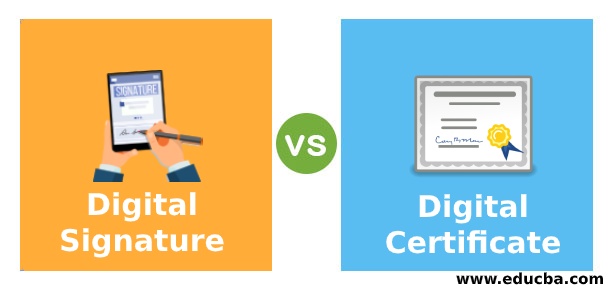Key Differences between Digital Signature and Digital Certificate

Digital signatures and digital certificates are both crucial components of Public Key Infrastructure (PKI) and are often used together in cryptographic systems, but they serve distinct purposes and have different characteristics. Here are the key differences between digital signatures and digital certificates:
-
Purpose:
- Digital Signature: A digital signature is used to provide authenticity, integrity, and non-repudiation to digital messages or documents. It is applied by the sender to ensure that the recipient can verify the origin and integrity of the content.
- Digital Certificate: A digital certificate is used to authenticate the identity of individuals, organizations, or devices in online communications. It binds a public key to an identity, facilitating secure communication and verification of the identity of parties involved.
-
Content:
- Digital Signature: A digital signature is created by applying a cryptographic algorithm to the content of a message or document, resulting in a unique hash value. This hash value is then encrypted using the sender's private key to create the signature.
- Digital Certificate: A digital certificate contains information such as the subject's name, public key, expiration date, and the digital signature of the issuing Certificate Authority (CA). It serves as a means of verifying the authenticity of the subject's public key and identity.
-
Issuer:
- Digital Signature: The digital signature is generated by the sender using their private key.
- Digital Certificate: The digital certificate is issued by a trusted Certificate Authority (CA) after verifying the identity of the certificate holder (subject). The CA signs the certificate using its private key, establishing trust in the binding between the public key and the identity.
-
Verification Process:
- Digital Signature: To verify a digital signature, the recipient uses the sender's public key to decrypt the signature and compare the resulting hash value with a independently computed hash value of the received content.
- Digital Certificate: To verify a digital certificate, the recipient uses the public key of the issuing CA to validate the digital signature on the certificate. If the signature is valid, the recipient can trust the information contained in the certificate.
-
Usage:
- Digital Signature: Digital signatures are used to sign electronic documents, authenticate messages, and ensure the integrity of data during transmission.
- Digital Certificate: Digital certificates are used to establish secure connections (e.g., HTTPS), authenticate users in online services (e.g., SSL/TLS), encrypt emails (e.g., S/MIME), and validate software integrity (e.g., code signing).
In summary, while digital signatures are used to ensure the authenticity and integrity of digital content, digital certificates are used to authenticate the identity of parties involved in online communication and establish trust in public keys.
Thank you,
